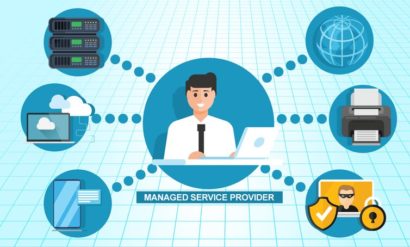Your Equipment Fails – What’s Next?
You invest heavily in information technology. You depend on your equipment to support your business. Then, the equipment fails. It’s inevitable. Only cockroaches survive forever. You’re left scrambling to find a replacement solution for essential tech. It’s a tough place to be, but it can also be an opportunity.
When you hear the news that a piece of equipment has failed, the headache starts soon after. It can mean costly downtime. You’re going to need to budget for a replacement. You have to spend time and effort determining the next, best solution. Users, and potentially customers, get frustrated, too.
If the equipment that’s conked out is a hard drive or server, don’t even reach for that headache remedy. Stop everything, and call for expert help. Anything you do can result in more data loss. This includes the age-old IT self-help remedy of turning it off and on again!
When anything carrying data fails, the next question is whether you have a recent backup. Can you restore data from that backup? We recommend you have as many as three data backups for safekeeping, with at least one of them kept off-site.
OK, it’s dead. Now what?
After the initial panic, once you’ve determined that technology is kaput, take some time to reassess.
Your decision-makers can start out by considering whether that equipment needs replacing. Don’t just do a knee-jerk rip and replace it. There may be better technology options or improved ways of doing what you were doing.
An on-site equipment failure is an opportunity to examine cloud technologies. The cloud is more than Software as a Service solutions giving users access to applications online. Infrastructure as a Service offerings quickly get up and running with new technology, and you gain access to enterprise-level infrastructure. Replacing hardware is no longer your problem. Plus, you’ll only pay for what you use and be able to scale up or down as needed.
There’s also less chance of data loss when working in the cloud. Cloud computing takes away the single-point-of-failure problem. Now, your data is available anywhere you have an internet connection. So, even if your desktop computer dies, you can still get into the same virtual desktop from another device. Cloud service providers build in redundancies, so data is not stored on a single server. This supports business continuity even after equipment failure or natural disasters.
Partnering with an MSP
Save yourself the stress of dealing with technology failures alone by partnering with a managed services provider (MSP). There are many advantages. First, we make sure you have a working data backup that’s tested for reliability and secure.
MSP experts also aim to detect potential failures before they happen. If a device needs replacing, we want to know before the last gasp of life. That helps ensure a smooth transition and helps level out the budget impact.
Further, MSPs know what’s involved in migrating technology to the cloud. We can help you weigh up the pros and cons, assessing what’s best for your individual business. Plus, we develop your migration strategy and provide ongoing support.
MSPs identify the best providers for your needs. We tailor our services to your business workload, regardless of company size. We make sure every business accesses the best technological tools. Unlike a software salesperson, we don’t enjoy selling you more than you need. We want you to have the best technology at all times and to help prevent issues before they happen.
Don’t wait for the death knell of your valuable IT equipment to sound. Partner with an MSP for peace of mind. Contact us at (615) 522-0080 today!

Safe Network Solutions is a technology consulting firm located in Nashville, TN. We are focused on reducing our Clients’ stress and the time they spend handling IT related issues. As technology has become more integrated with daily business tasks, downtime is not an option. Whether your systems reside on-premise, in the cloud, or in a hybrid setup, you need a partner with expertise in a wide array of technologies, with a security focus.


